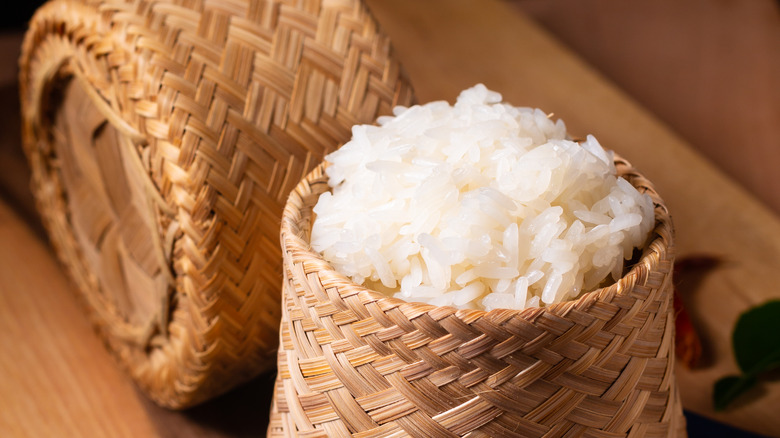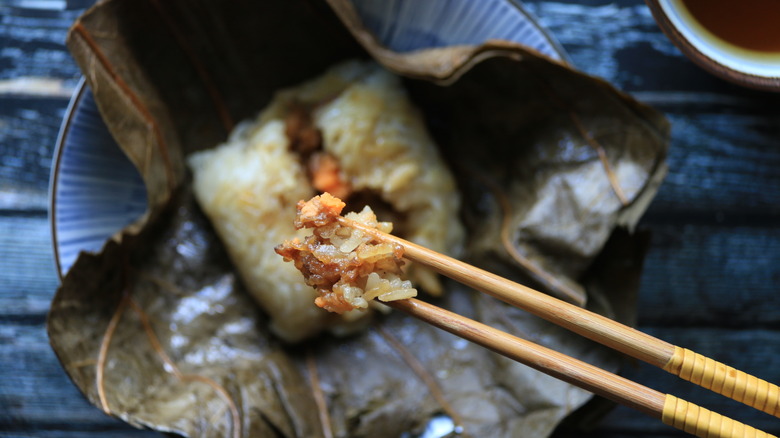You Should Consider Making Sticky Rice In A Steamer
Sticky rice is not only a descriptive label but the name of a specific type of rice that requires much attention and care to get right (via Hungry Huy). Also known as glutinous rice or sweet rice, sticky rice is most popular in Lo Mai Gai, a lotus leaf-wrapped rice dish in Cantonese dim sum. But we see it in other cuisines, sometimes even as a dessert — like Thai mango sticky rice, which elevates the texture of the rice with syrupy coconut milk. Either way, sticky rice is distinct from short or medium-grain white rice, although both end up pretty sticky.
According to Rouxbe, other types of rice, like long-grain or even sushi, do not have nearly as much amylopectin starch as sticky rice, which makes those grains sticky. Long-grain rice like jasmine and basmati are already known to be less sticky than shorter-grain, hence their tendency to separate easily. However, even stickier rice like Japonica, which is used in sushi, has a significantly smaller amount of amylopectin starch, according to Ichi Sushi. Plant Based FAQs notes that the amylopectin starch content gives sticky rice its outer glue and almost gelatinous texture. So while it wouldn't be a heinous crime to cook sticky rice as you would any other type (submerged in water in a rice cooker), it may be wiser to use another cooking method.
Steaming retains the perfect balance between chewy and sticky
Traditional Lo Mai Gai preparations require sticky rice to be steamed rather than pressure cooked. The Woks of Life's Lo Mo Gai recipe shows that you must soak sticky rice in water for a couple of hours, while in their sticky rice recipe, they recommend a range from six to 24. Rinsing your rice is a crucial step, as soaking penetrates the grain's outer shell, allowing it to cook more evenly once you begin the steaming process, per Better Homes & Gardens.
You may wonder why you can't cook sticky rice in your high-tech rice cooker. You technically can, but the traditional way of soaking and steaming sticky rice gives it the perfect chewy texture while maintaining the desired stickiness. CNET explains that a rice cooker brings the rice and water to a boil, which then carries the heat by steam, cooking the insides. While this mechanism suits other types of rice, the high amylopectin starch in glutinous rice makes it prone to becoming one gluey mass.
Soaking and steaming minimize your margin of error because you need not worry about adding too much water or too little. Better Homes & Gardens notes that while soaking opens up the grain, steaming cooks it perfectly without breaking it down into a wet porridge. So while this preparation may seem more arduous than the rice cooker method, it will give you the best texture and overall sweetness.

